Table of contents
- Introduction of vegetable soup
- What is Minestrone Soup? A Glimpse into History
- Essential Ingredients: The Building Blocks of Flavor
- The Ultimate Minestrone Soup Recipe: A Step-by-Step Guide
- Serving Suggestions & Pairings: Complete the Meal
- Tips & Tricks for the Best Minestrone Soup
- Frequently Asked Questions (FAQ)
- Conclusion: Your Minestrone Adventure Awaits!
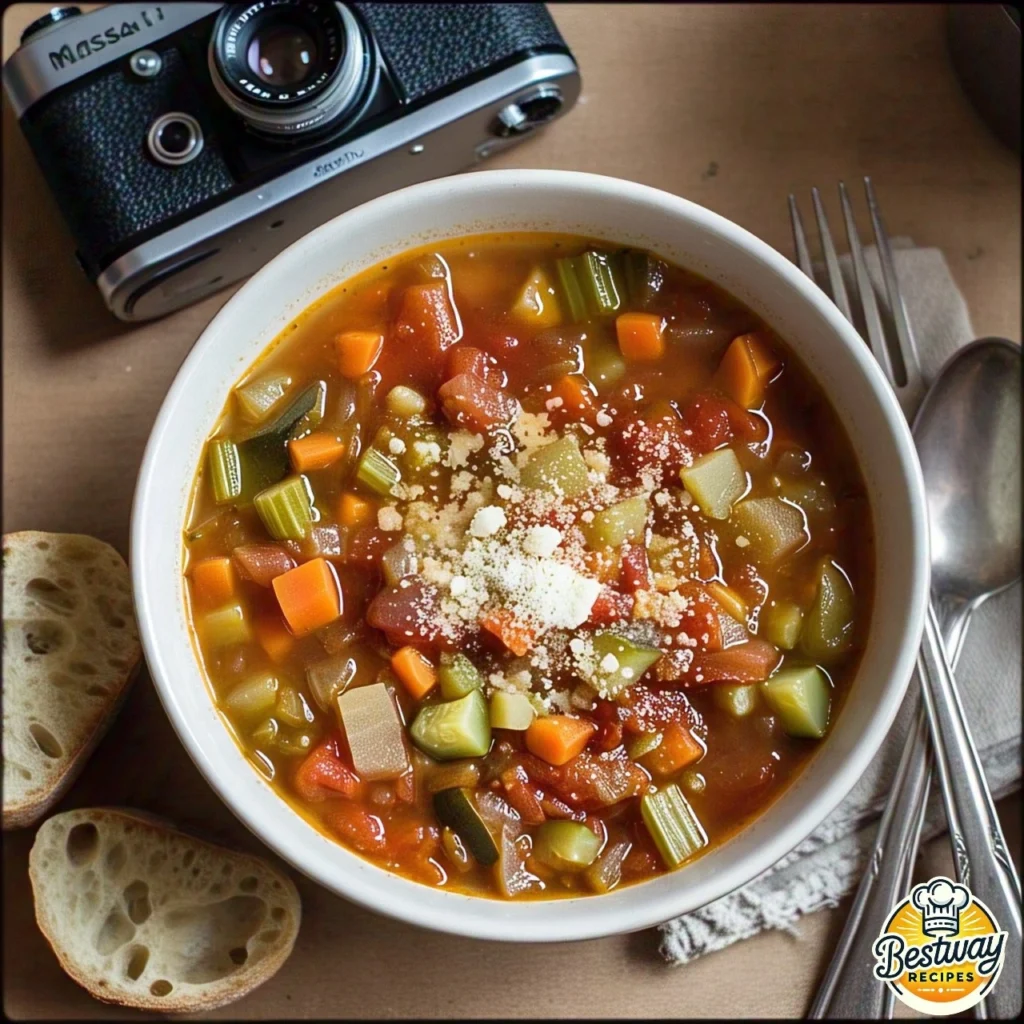
Introduction of vegetable soup
Have you ever craved a dish that’s both comforting and bursting with fresh flavors? Something healthy, satisfying, and endlessly adaptable to whatever you have on hand? If so, then look no further than minestrone soup!
I still remember the first time I tasted a truly exceptional minestrone. It wasn’t in a fancy restaurant, but at my Italian friend’s Nonna’s kitchen table. The aroma alone was intoxicating – a symphony of simmering vegetables, herbs, and savory broth. One spoonful, and I was hooked. It was more than just soup; it was a taste of history, tradition, and family.
In this ultimate guide, we’ll journey together to unlock the secrets of minestrone soup. Whether you’re a seasoned chef or a kitchen novice, you’ll discover how to create the best minestrone soup recipe imaginable, tailored to your own preferences and pantry staples. We’ll also explore the easy minestrone soup options. Get ready to embark on a delicious adventure!
What is Minestrone Soup? A Glimpse into History
Minestrone soup isn’t just a recipe; it’s a story. Its origins lie in the peasant kitchens of Italy, where resourcefulness reigned supreme. As a “poor soup,” it was traditionally made with whatever vegetables were available – a true testament to the art of making something delicious from humble ingredients.
Think of it as the original “clean out the fridge” meal. This history is one reason the best minestrone soup recipe is unique every time. There are no hard and fast rules, only guidelines.
Regional Rhapsody: Italy, being a land of diverse culinary traditions, boasts numerous regional variations of minestrone. Here are a few examples of how the recipe changes around Italy:
| Region | Key Characteristics |
| Liguria | Often includes pesto, a basil-based sauce. |
| Lombardy | May feature rice instead of pasta. |
| Tuscany | Bread is often added for thickening and texture. |
| Veneto | Frequently includes beans and root vegetables. |
The beauty of minestrone soup lies in its adaptability. It’s a canvas for your culinary creativity, allowing you to customize it with seasonal ingredients and personal touches.
Essential Ingredients: The Building Blocks of Flavor
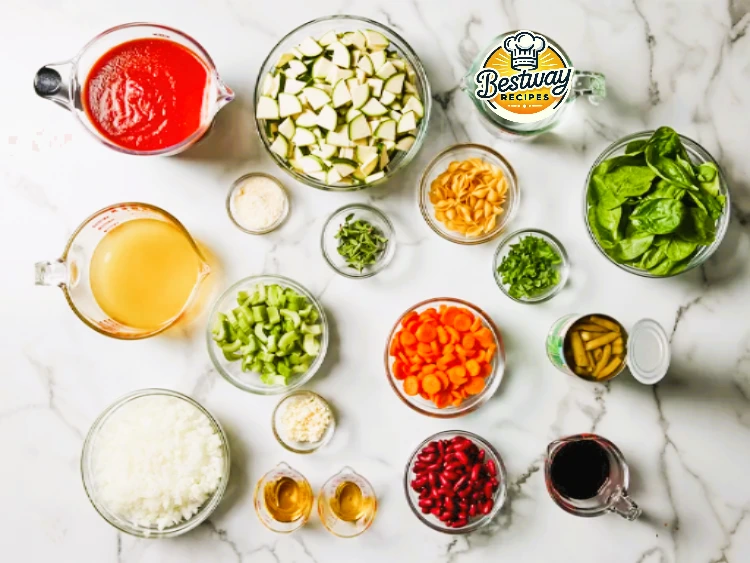
To create a truly outstanding minestrone soup, you’ll need to start with high-quality ingredients. Here’s a detailed guide to the essentials:
Comprehensive Ingredient List:
- 2 tablespoons olive oil
- 1 onion, chopped
- 2 carrots, chopped
- 2 celery stalks, chopped
- 2 cloves garlic, minced
- 1 (28 ounce) can crushed tomatoes
- 6 cups vegetable broth (or chicken broth for a non-vegetarian version)
- 1 (15 ounce) can cannellini beans, rinsed and drained
- 1 cup diced zucchini
- 1 cup diced green beans
- 1/2 cup small pasta (such as ditalini or elbow macaroni)
- 1/4 cup chopped fresh parsley
- Salt and pepper to taste
- Grated Parmesan cheese, for serving (optional)
Ingredient Deep Dive:
Let’s explore some key ingredients in more detail:
- Beans:
- Types: Cannellini beans are a classic choice, but kidney beans, borlotti beans, or even chickpeas can be used.
- Substitutions: For a lower-carb option, try using more vegetables instead of beans.
- Tips: Canned beans are convenient, but cooking dried beans from scratch will yield a richer flavor.
- Why They Work: Beans add protein, fiber, and a creamy texture to the soup.
- Pasta:
- Types: Small pasta shapes like ditalini, elbow macaroni, or orzo work best.
- Substitutions: Gluten-free pasta can be used for those with dietary restrictions. For a heartier soup, consider adding more vegetables in place of pasta.
- Tips: Add the pasta towards the end of the cooking time to prevent it from becoming mushy.
- Why They Work: Pasta adds carbohydrates and a satisfying heartiness to the soup.
- Vegetables:
- Types: The possibilities are endless! Onions, carrots, celery, zucchini, green beans, spinach, kale, and tomatoes are all excellent choices.
- Substitutions: Use whatever seasonal vegetables you have on hand.
- Tips: Chop the vegetables into uniform sizes to ensure even cooking.
- Why They Work: Vegetables provide vitamins, minerals, and a variety of flavors and textures.
- Broth:
- Types: Vegetable broth is ideal for a vegetarian version, while chicken broth adds a richer flavor to non-vegetarian minestrone.
- Substitutions: Water can be used in a pinch, but broth adds depth of flavor.
- Tips: Use homemade broth for the best flavor.
- Why They Work: Broth provides the liquid base for the soup and infuses it with flavor.
Ingredient Spotlight: Tomatoes
The choice of tomatoes can significantly impact the overall flavor of your minestrone soup. While canned crushed tomatoes are a convenient option, using fresh, ripe tomatoes (especially during the summer months) can elevate the dish to a whole new level. Consider roasting the tomatoes before adding them to the soup to intensify their sweetness.
The Ultimate Minestrone Soup Recipe: A Step-by-Step Guide
Ready to create the best minestrone soup recipe? Follow these simple steps:
1.Sauté the Aromatics: In a large pot or Dutch oven, heat the olive oil over medium heat. Add the onion, carrots, and celery and cook until softened, about 5-7 minutes. Add the garlic and cook for another minute until fragrant. Why? Sautéing the vegetables first releases their flavors and creates a flavorful base for the soup.
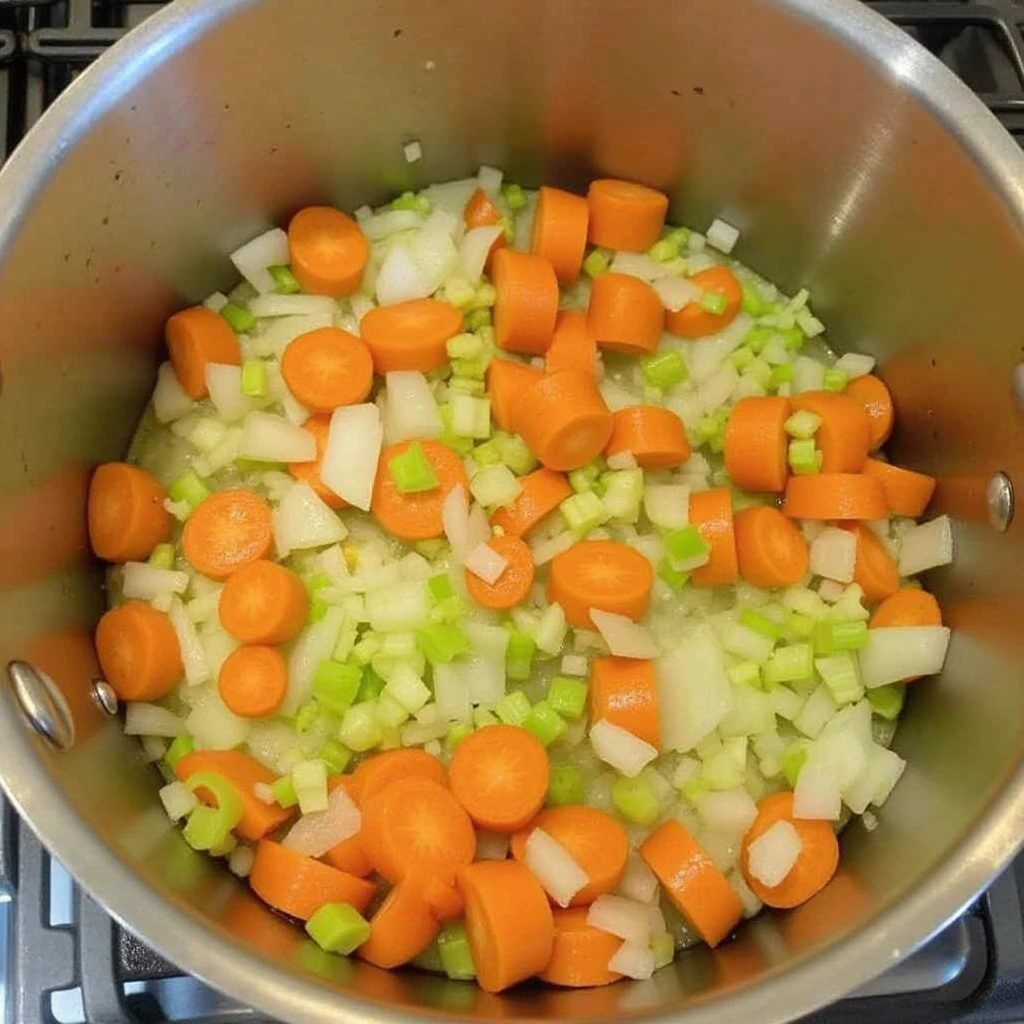
2.Add Tomatoes and Broth: Stir in the crushed tomatoes and vegetable broth. Bring to a boil, then reduce heat and simmer for 15 minutes. Why? Simmering allows the flavors to meld together.
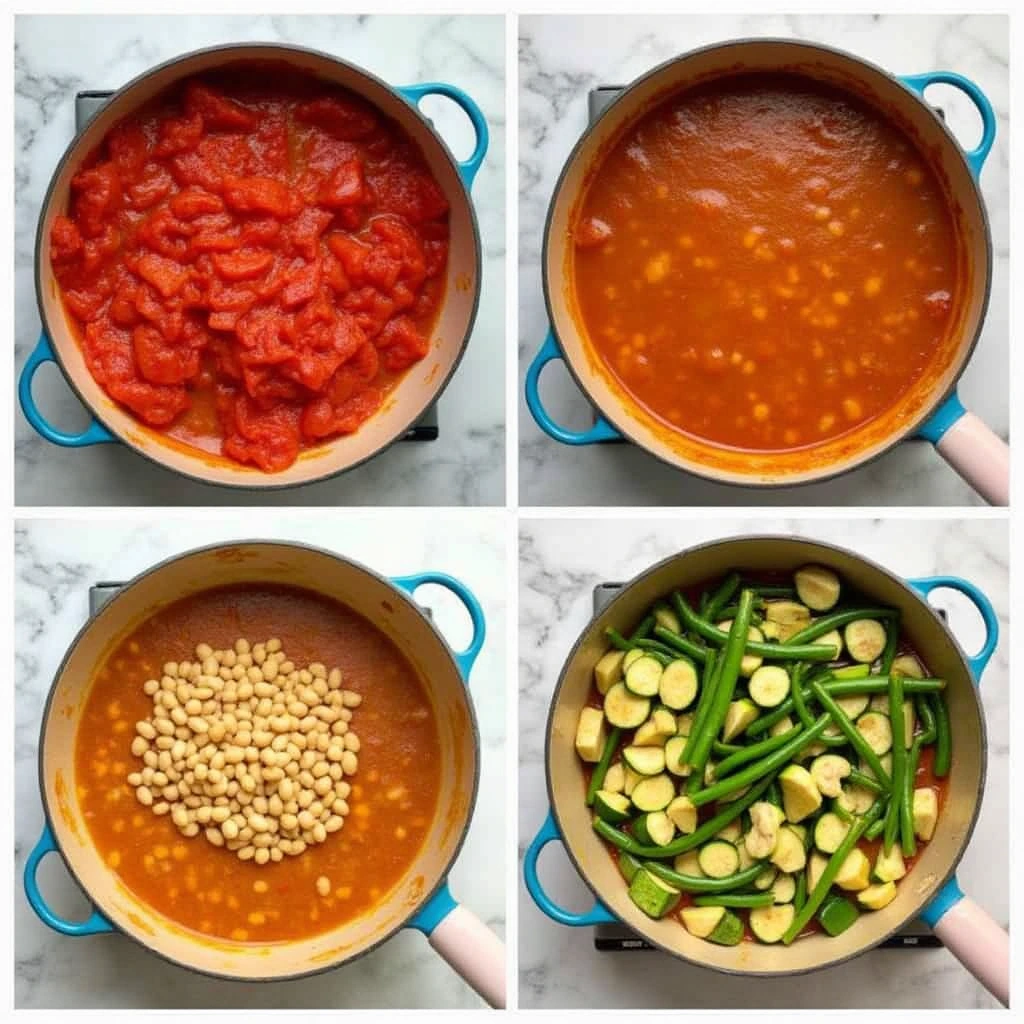
3.Incorporate Beans and Vegetables: Add the cannellini beans, zucchini, and green beans. Simmer for another 10 minutes. Why? Adding the vegetables in stages ensures they cook evenly and retain their texture.
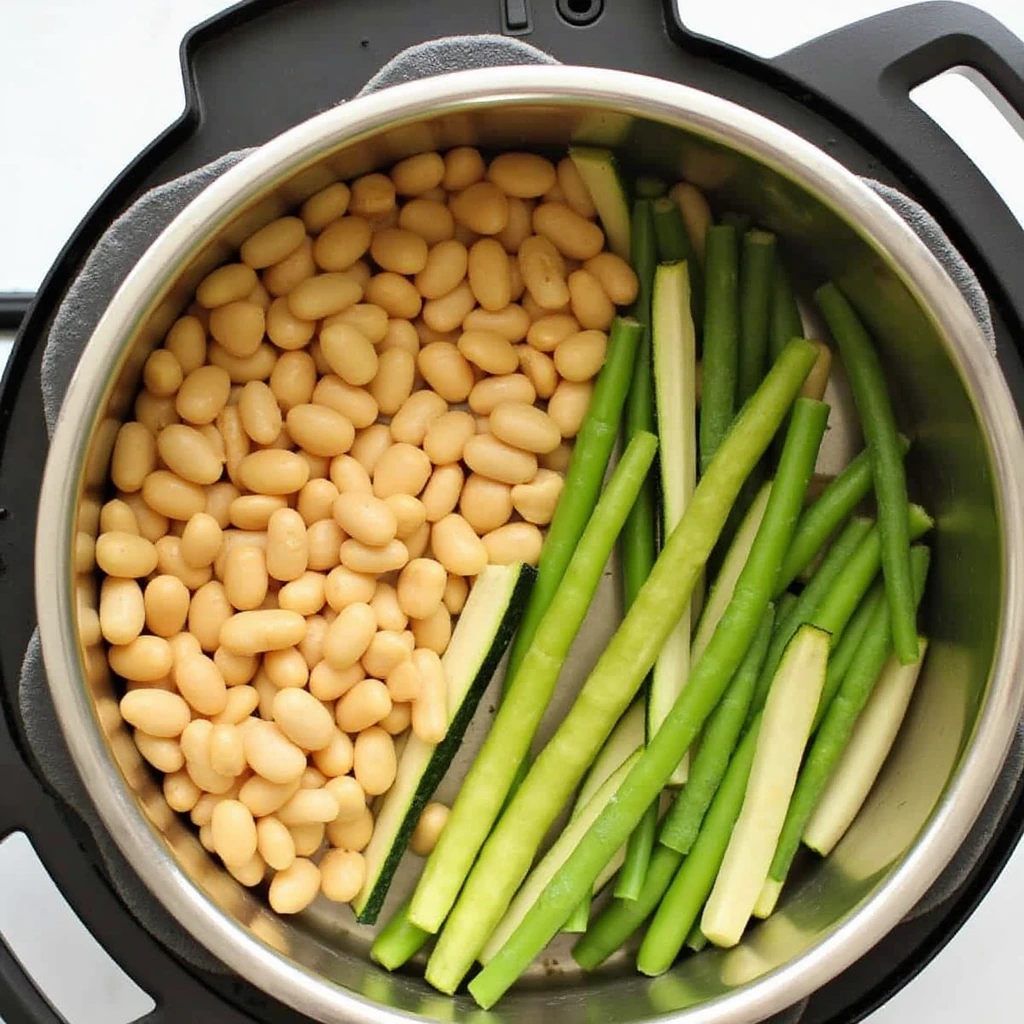
4.Add Pasta: Stir in the pasta and cook according to package directions (usually about 8-10 minutes). Why? Adding pasta towards the end prevents it from becoming mushy.
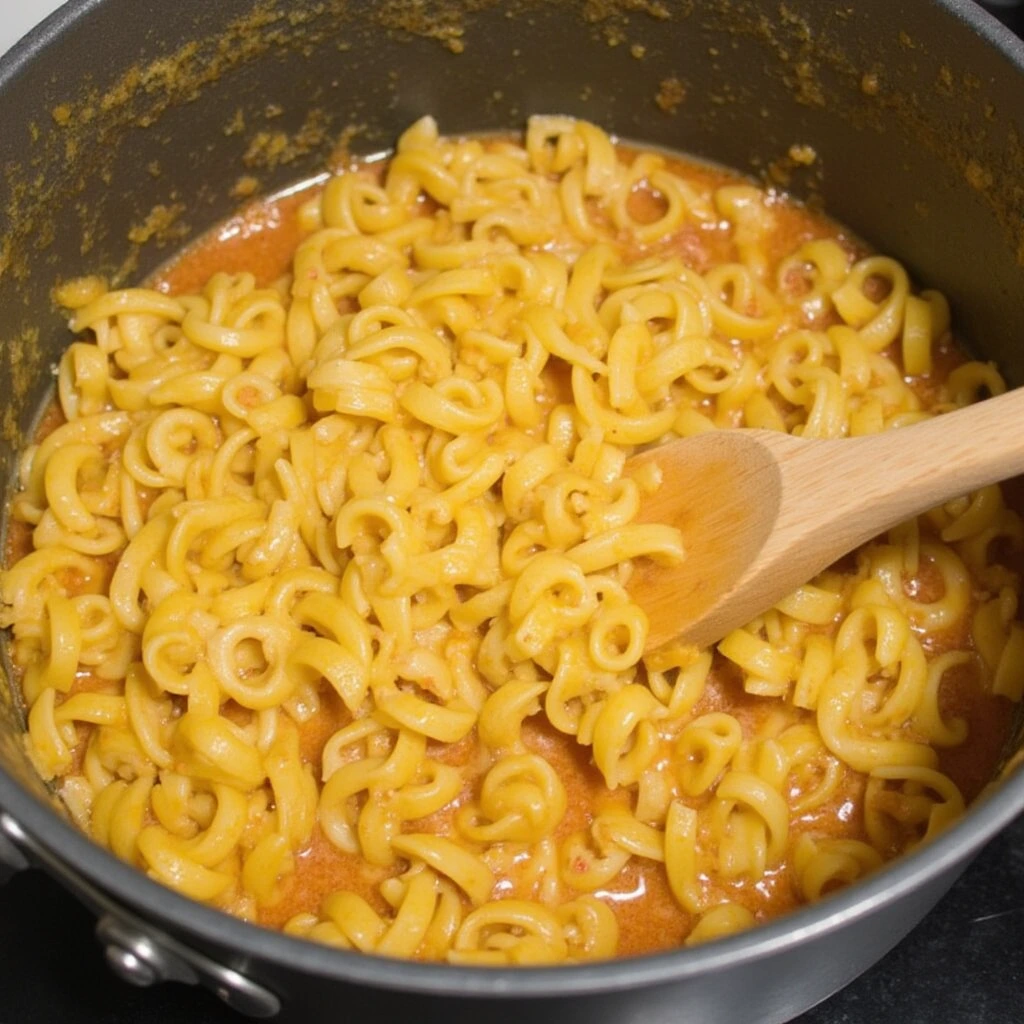
5.Season and Serve: Stir in the parsley, salt, and pepper to taste. Serve hot, garnished with grated Parmesan cheese, if desired. Why? Fresh herbs add a vibrant finishing touch.
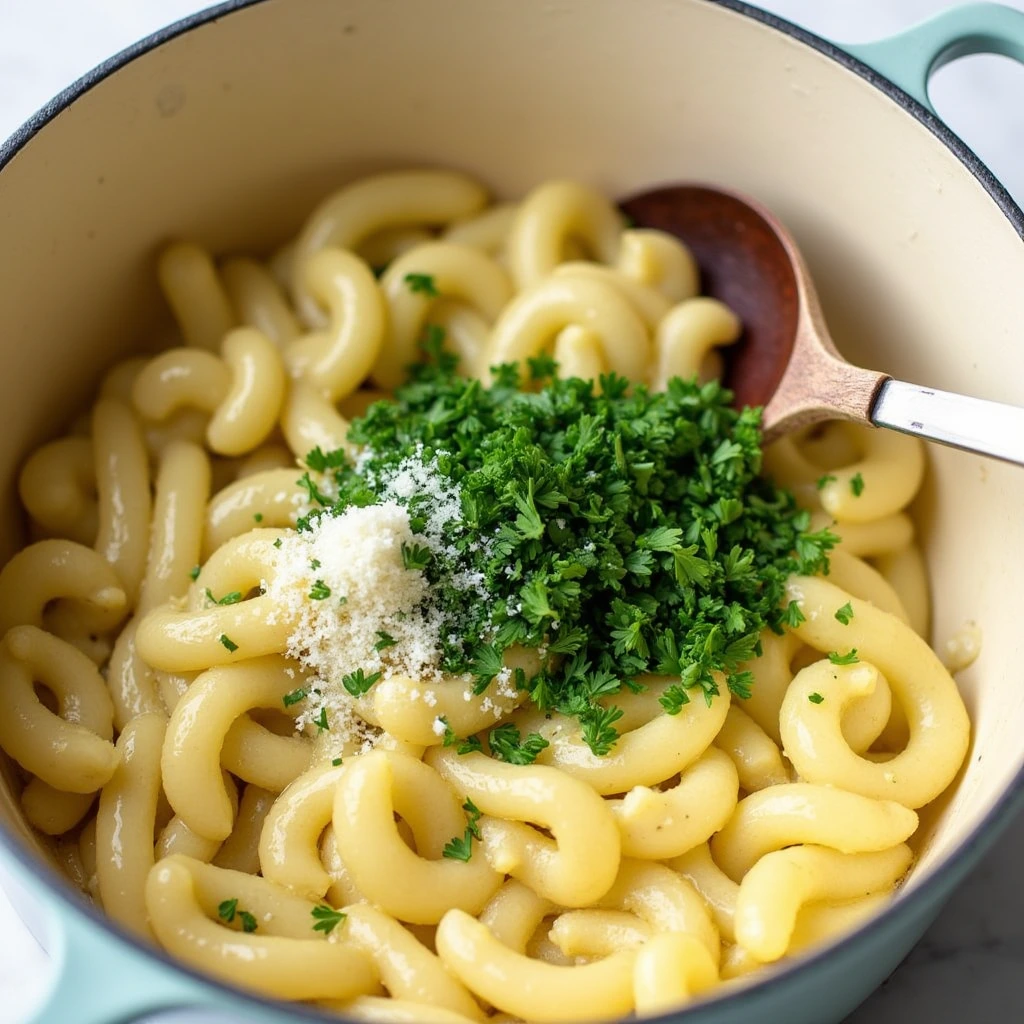
Troubleshooting Tips:
- Soup too thick? Add more broth.
- Soup too thin? Simmer for longer to reduce the liquid.
- Not enough flavor? Add a Parmesan rind to the broth while simmering (remove before serving) or add a splash of balsamic vinegar.

Minestrone Soup
Equipment
- 1 Large Pot (for cooking the soup)
- 1 Cutting board (for chopping vegetables)
- 1 Sharp knife (for cutting ingredients)
- 1 Wooden spoon (for stirring)
- 1 Ladle (for serving)
- 1 Measuring cup (for liquids)
- 1 Colander (for draining beans or pasta)
Ingredients
- 2 tbsp olive oil
- 1 onion, diced
- 2 carrots, diced
- 2 celery stalks, diced
- 3 garlic cloves, minced
- 1 zucchini, diced
- 1 can (14 oz) diced tomatoes
- 4 cups vegetable broth
- 1 can (15 oz) cannellini beans, drained and rinsed
- 1/2 cup small pasta (ditalini, elbow macaroni, or orzo)
- 1 tsp dried oregano
- 1 tsp dried basil
- 1/2 tsp salt (or to taste)
- 1/4 tsp black pepper
- 2 cups fresh spinach or kale, chopped
- 1/2 cup green beans, chopped
- 1 bay leaf
- 1 tbsp tomato paste
- Parmesan cheese (for garnish, optional)
Instructions
- Sauté Vegetables: Heat olive oil in a large pot over medium heat. Add onions, carrots, and celery, and sauté for 5 minutes until softened.
- Add Garlic & Zucchini: Stir in garlic and zucchini, cooking for another 2 minutes.
- Incorporate Tomatoes & Broth: Add diced tomatoes, tomato paste, and vegetable broth. Stir to combine.
- Season & Simmer: Add oregano, basil, salt, pepper, bay leaf, green beans, and cannellini beans. Bring to a boil, then reduce heat and let simmer for 30 minutes.
- Cook Pasta: Add pasta to the pot and cook according to package instructions (about 8-10 minutes).
- Finish with Greens: Stir in spinach or kale and cook for an additional 2 minutes until wilted. Remove bay leaf.
- Serve & Enjoy: Ladle into bowls and garnish with Parmesan cheese if desired.
Video
Notes
Variations & Adaptations: A World of Minestrone Possibilities
The beauty of minestrone soup is its versatility. Here are a few variations to spark your imagination:
- Regional Variations:
- Genovese Minestrone: Add a spoonful of pesto to each serving.
- Tuscan Minestrone: Add chunks of stale bread to the soup for thickening.
- Dietary Adaptations:
- Vegetarian: Use vegetable broth and omit the Parmesan cheese.
- Vegan: Ensure all ingredients are plant-based, including the broth and pasta. Omit the Parmesan cheese.
- Gluten-Free: Use gluten-free pasta or omit the pasta altogether.
- Low-Sodium: Use low-sodium broth and adjust the salt to taste.
- Seasonal Variations:
- Summer Minestrone: Use fresh summer vegetables like corn, bell peppers, and cucumbers.
- Winter Minestrone: Use root vegetables like potatoes, carrots, and parsnips.
- Creative Twists:
- Spicy Minestrone: Add a pinch of red pepper flakes or a dash of hot sauce.
- Minestrone with Roasted Vegetables: Roast the vegetables before adding them to the soup for a deeper flavor.
Serving Suggestions & Pairings: Complete the Meal
Minestrone soup is a hearty and satisfying meal on its own, but it can also be paired with other dishes to create a complete culinary experience:
- Side Dishes: Serve with crusty bread for dipping or a simple salad for a refreshing contrast.
- Wine Pairings: A light-bodied Italian red wine, such as Chianti, pairs well with minestrone soup.
- Storage & Reheating: Leftover minestrone soup can be stored in the refrigerator for up to 3 days. Reheat on the stovetop or in the microwave.
- Freezing: Minestrone soup freezes well. Store in airtight containers for up to 3 months.
Tips & Tricks for the Best Minestrone Soup
Elevate your minestrone soup to the next level with these expert tips:
- Flavor Building: Sautéing the vegetables properly is key to developing a deep and complex flavor. Don’t rush this step!
- Texture: Partially pureeing the soup with an immersion blender can create a creamier consistency without adding cream.
- Timing: Add the pasta towards the end of the cooking time to prevent it from becoming mushy.
- Seasoning: Taste and adjust the seasoning throughout the cooking process. Don’t be afraid to add more salt, pepper, or herbs to taste.
Frequently Asked Questions (FAQ)
- Can I use frozen vegetables? Yes, frozen vegetables can be used in minestrone soup. Add them directly to the pot without thawing.
- Can I make it in a slow cooker? Yes, minestrone soup can be made in a slow cooker. Sauté the vegetables on the stovetop first, then transfer them to the slow cooker with the remaining ingredients. Cook on low for 6-8 hours.
- What kind of pasta is best for minestrone? Small pasta shapes like ditalini, elbow macaroni, or orzo work best.
- Can I add meat to minestrone soup? Yes, you can add meat to minestrone soup. Consider adding cooked sausage, bacon, or ground beef.
Conclusion: Your Minestrone Adventure Awaits!
With its rich history, adaptable nature, and endless possibilities, minestrone soup is a dish that truly deserves a place in every cook’s repertoire. I hope this ultimate guide has inspired you to create your own perfect bowl of comfort.
So, what are you waiting for? Grab your favorite vegetables, gather your loved ones, and embark on your minestrone adventure today!
Don’t forget to try the recipe and let me know what you think in the comments below. And if you’re looking for more delicious and easy recipes, sign up for our newsletter!
Author´sTop Recipes Piks
- Korean Ground Beef:
- Strawberry Cheesecake Cinnamon Rolls
- The Ultimate Hobo Casserole
- Moist Banana Bread Recipe
- 10 Best Chicken Gnocchi Soup Recipes
- Delicious Ditalini Pasta Recipes
- How to Make the Best Potato Soup in 30 Minutes
- How to Make Breakfast Pizza for School in 20 Minutes
- Chicken Breast: How to Cook It Perfectly in 15 Minutes
- How to Make Garlic Parmesan Cheeseburger Bombs in 5 Steps

